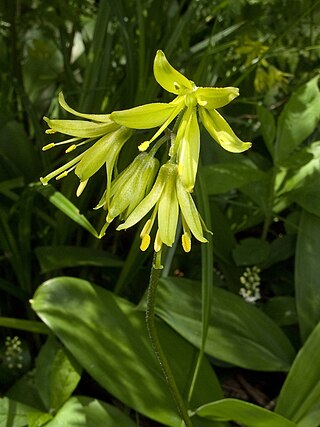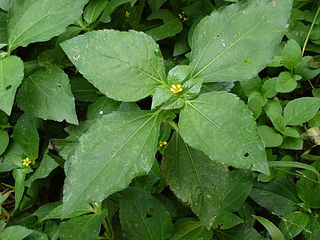
Yucca is a genus of perennial shrubs and trees in the family Asparagaceae, subfamily Agavoideae. Its 40–50 species are notable for their rosettes of evergreen, tough, sword-shaped leaves and large terminal panicles of white or whitish flowers. They are native to the Americas and the Caribbean in a wide range of habitats, from humid rainforest and wet subtropical ecosystems to the hot and dry (arid) deserts and savanna.

Antennaria is a genus of dioecious perennial herbs in the family Asteraceae, native to temperate regions of the Northern Hemisphere, with a few species in temperate southern South America; the highest species diversity is in North America. Common names include catsfoot or cat's-foot, pussytoes and everlasting.

Agave amica, formerly Polianthes tuberosa, the tuberose, is a perennial plant in the family Asparagaceae, subfamily Agavoideae, extracts of which are used as a note in perfumery. Now widely grown as an ornamental plant, the species is native to Mexico.
Maguey may refer to various American plants:

Monarda is a genus of flowering plants in the mint family, Lamiaceae. The genus is endemic to North America. Common names include bergamot, bee balm, horsemint, and oswego tea, the first being inspired by the fragrance of the leaves, which is reminiscent of bergamot orange. The genus was named for the Spanish botanist Nicolás Monardes, who wrote a book in 1574 describing plants of the New World.

Clintonia borealis is a species of flowering plant in the lily family Liliaceae. The specific epithet borealis means "of the north," which alludes to the fact that the species tends to thrive in the boreal forests of eastern Canada and northeastern United States.

Pellaea is a genus of ferns in the Cheilanthoideae subfamily of the Pteridaceae. The genus name is derived from the Greek word πελλος (pellos), meaning "dark," and refers to the brown stems. Many members of the genus are commonly known as cliffbrakes. They primarily grow in rocky habitats, including moist rocky canyons, slopes, and bluffs.

Beschorneria is a genus of succulent plants belonging to the family Asparagaceae, subfamily Agavoideae, native to semi-arid areas of Mexico and Central America. They are generally large evergreen perennials forming clumps of grey-green leaves, with tall flower-spikes to 1.5 metres (4.9 ft). Marginally hardy, they may require winter protection in areas subject to frost.
- Beschorneria albifloraMatuda - Oaxaca, Chiapas, Guatemala, Honduras
- Beschorneria calcicolaA.García-Mendoza - Puebla, Oaxaca, Veracruz
- Beschorneria dubiaCarrière - Tamaulipas
- Beschorneria rigidaRose - Guanajuato, San Luis Potosí, Puebla
- Beschorneria septentrionalisA.García Mendoza - Tamaulipas, Nuevo León
- Beschorneria tubiflora(Kunth & C.D.Bouché) Kunth - San Luis Potosí, Hidalgo
- Beschorneria wrightiiHook.f - México State
- Beschorneria yuccoidesK.Koch - Hidalgo, Puebla, Veracruz

Sporobolus is a nearly cosmopolitan genus of plants in the grass family. The name Sporobolus means "seed-thrower", and is derived from Ancient Greek word σπόρος (spóros), meaning "seed", and the root of βάλλειν (bállein) "to throw", referring to the dispersion of seeds. Members of the genus are usually called dropseeds or sacaton grasses. They are typical prairie and savanna plants, occurring in other types of open habitat in warmer climates. At least one species is threatened with extinction, and another is extinct.

Allium textile is a common species of wild onion found in the central part of North America.

An arriero, muleteer, or more informally a muleskinner is a person who transports goods using pack animals, especially mules.

Fique is a natural fibre that grows in the leaves of plants in the genus Furcraea. Common names include fique, cabuya, pita, penca, penco, maguey, cabui, chuchao and coquiza.

Furcraea cabuya is a species of plant in the family Asparagaceae that is native to South America. The fibres in its leaves, known as fique, are used in making ropes.

Corylus americana, the American hazelnut or American hazel, is a species of deciduous shrub in the genus Corylus, native to the eastern and central United States and extreme southern parts of eastern and central Canada.

Symphoricarpos occidentalis, commonly called western snowberry, is a woody species of flowering plant in the honeysuckle family.

Bradburia is a North American genus of flowering plants in the family Asteraceae, native to the southern United States.

Synedrella is a genus of flowering plants in the family Asteraceae.

Furcraea andina is a species of flowering plant in the family Asparagaceae. It is native to Ecuador, Peru and Bolivia in South America. The fibres in its leaves, known as fique, are used in making ropes.
Furcraea niquivilensis is a plant species native to Chiapas, Mexico.

Furcraea tuberosa is a species of flowering plant in the family Asparagaceae. It is native to the Caribbean, and it is naturalized in parts of South Africa. Plants have a limited use as a source of fibre.



























